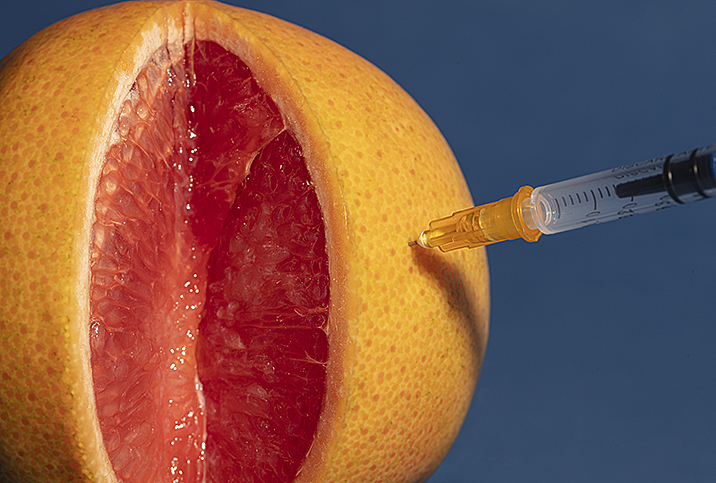The Facts About Lesser-Known Vaginal Conditions

Chronic vaginal health conditions, such as bacterial overgrowth, fungal infections and human papillomavirus (HPV), are common conditions that are often overlooked but require gynecological intervention for proper diagnosis.
Because many women are unfamiliar with these lesser-known vaginal conditions, they often go untreated. But understanding these conditions can help women self-advocate and work with their doctors to identify and treat them.
An overview of vaginal health
The vagina is a muscular channel that starts at the vaginal opening and leads to the cervix. The health of this delicate but resilient cavity is essential in preventing and treating common health conditions that can lead to more serious complications, including cancer.
Daily hygiene choices are essential in either maintaining or disrupting the vagina's natural pH level. The vagina is a slightly acidic environment, with a pH level of around 4.5, creating an environment in which healthy bacteria survive and unhealthy bacteria are destroyed.
Women have been taught that regular douches and vaginal cleaning products are needed to keep the vagina clean. Unfortunately, this myth has caused more harm than good. Using soaps and douches inside the vagina kills both helpful and harmful bacteria, leaving only the most resilient bacteria, which are often the most harmful. A healthy vagina does not need to be washed.
The only cleaning products that should go near the vagina are pH-balanced washes that are hypoallergenic and fragrance-free. These products should only be used externally on the pubis and labia to remove vaginal discharge buildup.
A healthy vagina should produce clear or white discharge that can vary in quantity and will also vary based on the timing of a woman's cycle. It's normal to have a different type and quantity of vaginal discharge leading up to and after a menstrual period. The skin outside of the vagina should be moist, plump and free of blemishes, sores and inflammation. Promoting vaginal health with diet and exercise is important to overall health and sexual functions. Food choices such as fermented, probiotic and prebiotic options can also help to support natural vaginal pH balance, which can prevent bacterial and fungal overgrowths.
Vaginismus
Vaginismus is a condition in which the vaginal walls contract tightly to prevent the insertion of objects into the vagina. For many women, this is a painful condition that impacts every aspect of their vaginal health. This contraction is abrupt and often painful, and can prevent women from having intercourse. In addition to stopping vaginal sex, this also prevents annual pelvic exams, treatment for vaginal yeast infections, inserting contraceptives such as IUDs and vaginal rings, and even the use of tampons.
There are two types of vaginismus, primary and secondary. Primary vaginismus is a chronic condition in that a woman has always had involuntary spasms that have prevented tampon use and sex. Secondary vaginismus can occur at any time in a woman’s life, sometimes without a specific cause.
For an individual managing this condition, it can be nearly impossible to have sex and preventive exams, and vaginal health practices can be a painful experience. While the cause of this condition can vary from one person to another, it's clear that treatment must be a multifaceted approach that includes both physical and psychological aspects.
The physical treatments for vaginismus include numbing creams, vaginal dilators, Kegel exercises and Botox injections. These treatments can be used individually or in tandem to retrain the pelvic floor to accept the insertion of objects without spasming. Some treatments work more quickly than others, but the psychological aspect of vaginal penetration is often a longer process.
For some, this condition can be brought on by past painful sexual experiences or sexual trauma. For others, recurrent infections and vaginal dryness make individuals associate penetration with pain. Overcoming the fear and expectation of pain takes time, but with the use of cognitive behavioral therapy, vaginal conditioning with dilators and sex therapy, many individuals can make a full recovery.
Bacterial vaginosis
Bacterial vaginosis happens when vaginal conditions are changed by bacterial flora becoming imbalanced. This imbalance causes painful and itchy vaginal inflammation that can cause painful sex and urination. If left untreated, this condition can become a cervical or urinary tract infection (UTI).
In the past, bacterial vaginosis was thought to be a sexually transmitted infection (STI), and while sex can cause a bacterial imbalance, many women can get this infection because of hygiene habits and regular shifts in hormones. The risks for developing the condition include frequent sex, douching and a natural lack of lactobacilli bacteria.
Symptoms of this condition include itching and inflammation of the vulva tissue, especially the labia minora and vaginal opening. When this itching is associated with a foul, fishy smell and changes in vaginal discharge, visiting your gynecologist may be necessary to receive proper care.
Treatment for this condition is often an antibiotic that can be administered as a topical or suppository ointment or taken orally. While the treatment of the condition may seem straightforward, bacterial vaginosis can often need multiple rounds of treatment, and many women who have a lack of lactobacilli bacteria frequently have recurring overgrowths.
For this reason, preventive practices can be important to maintain bacterial balance. Many vaginal health products can cause or worsen bacterial overgrowths. Using products that promote healthy vaginal pH, eating probiotic foods and sometimes using suppository probiotics may promote a healthy vaginal flora balance. More research is definitely needed with regard to probiotics, and since they are supplements, they are not regulated by the Food and Drug Administration and may not be what they claim to be.
Cervical dysplasia
Cervical dysplasia is a precancerous condition of the cervix that is detected by a screening Pap smear. Abnormal cervical cell growths detected during a Pap smear can develop into cervical cancer without proper surveillance and treatment.
A diagnosis of cervical dysplasia can be disconcerting, but being diagnosed with cervical precancer means that the condition was caught so early that your precancerous growths are unlikely to become cervical cancer. If cervical cancer has developed, it's best that it is caught in an early stage, when the five-year survival rate is about 92 percent.
Unfortunately, there are often no symptoms that can alert us to cervical dysplasia, so the best preventive measures are to maintain a healthy vaginal biome and avoid high-risk behaviors that increase the chances of developing cancer.
One of the highest risk factors for developing cervical cancer is having human papillomavirus (HPV). This condition can be prevented by receiving the HPV vaccine. If diagnosed, HPV is manageable, and some HPV treatments can also prevent cervical cancer later in life.
Taking steps to maintain and enhance a healthy immune system is a crucial part of avoiding cervical cancer, and this includes an annual gynecological exam and Pap smears based on current guidelines. Most important, when diagnosed with a cervical precancer, you need to follow the treatment plan prescribed by your doctor.
When to see a doctor
Given everything the medical community continues to learn, it's essential to visit the gynecologist at least once a year for preventive pelvic exams. Regular screenings for cancers and infections can help find a problem early, which can prevent more serious conditions from developing, especially when many of these conditions have no symptoms or clear warning signs.
In between annual visits, document any changes to your vaginal health. It's common for changes in discharge to occur during menstruation, so keeping a detailed record can help to identify changes that are not associated with menstruation. These changes are often signs of an infection or PH imbalance.
Most changes to vaginal health can be treated at home with over-the-counter treatments or simply by changing vaginal hygiene habits. When it comes to vaginal hygiene, less really is more. The vagina is a self-cleaning environment that has developed to remove overgrowths, dead skin and abnormal cell growths. Sometimes, when the immune system or vaginal flora are compromised, the vagina may need help, which is when going to your gynecologist matters most.
Reduce your risk
When we use our annual visits as a time to coordinate with our doctors and report our health concerns—if you have a problem or concern that can't wait, schedule an appointment instead of waiting—we provide our doctors with vital information they can use to identify warning signs of larger complications. These conversations are key to learning about our bodies and understanding our complex reproductive system. The more we learn, the easier it is to reduce our risk of developing life-threatening diseases.


















